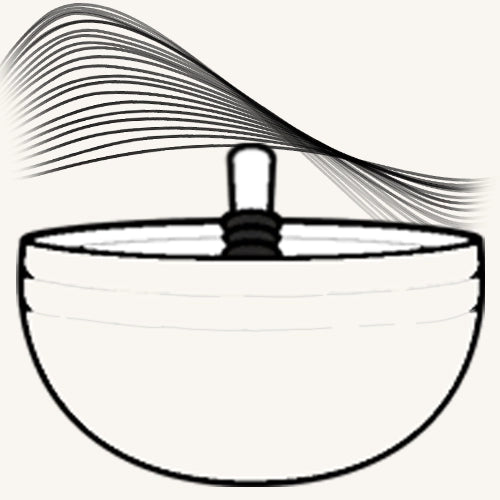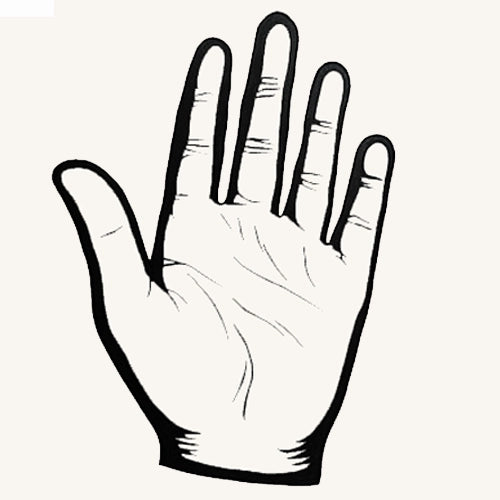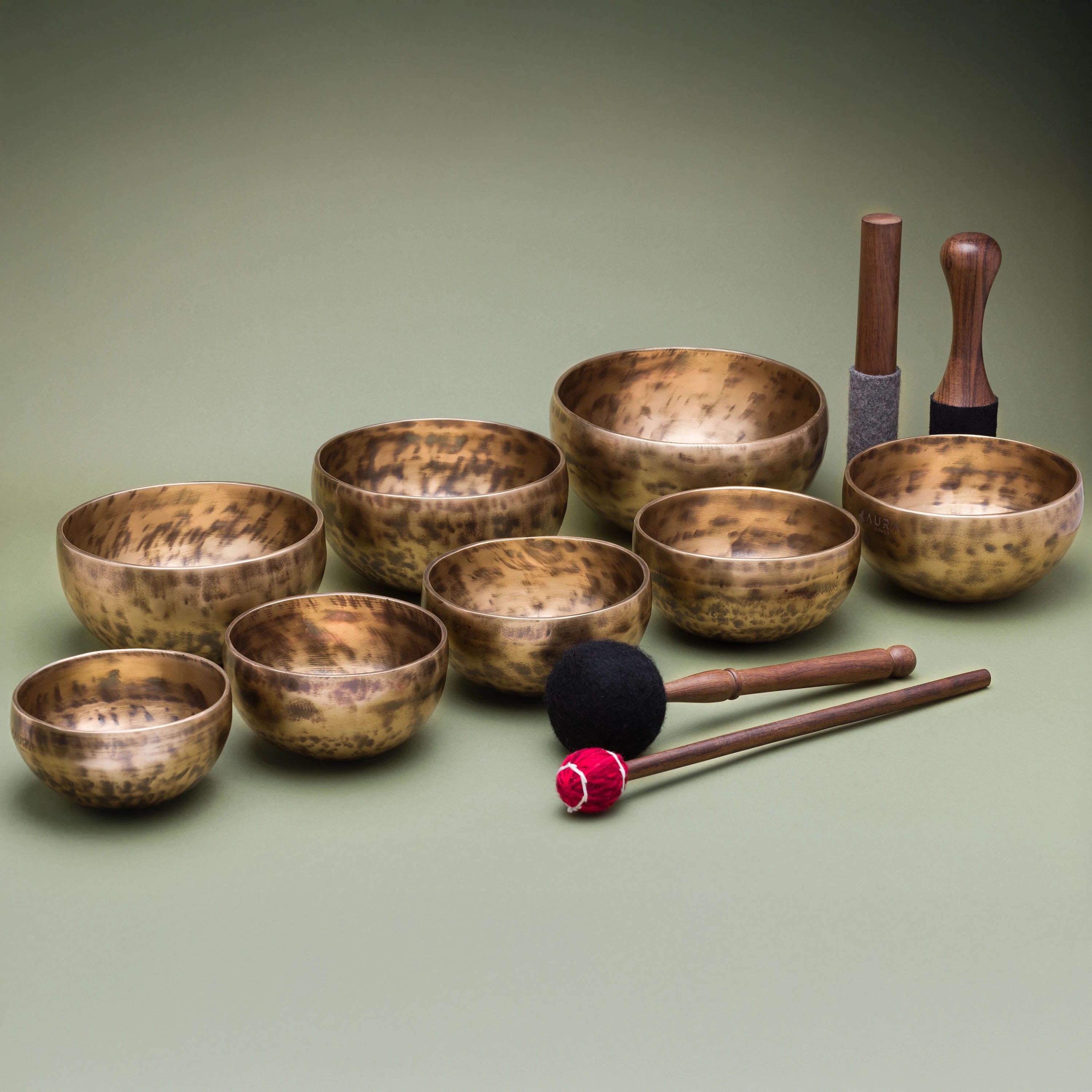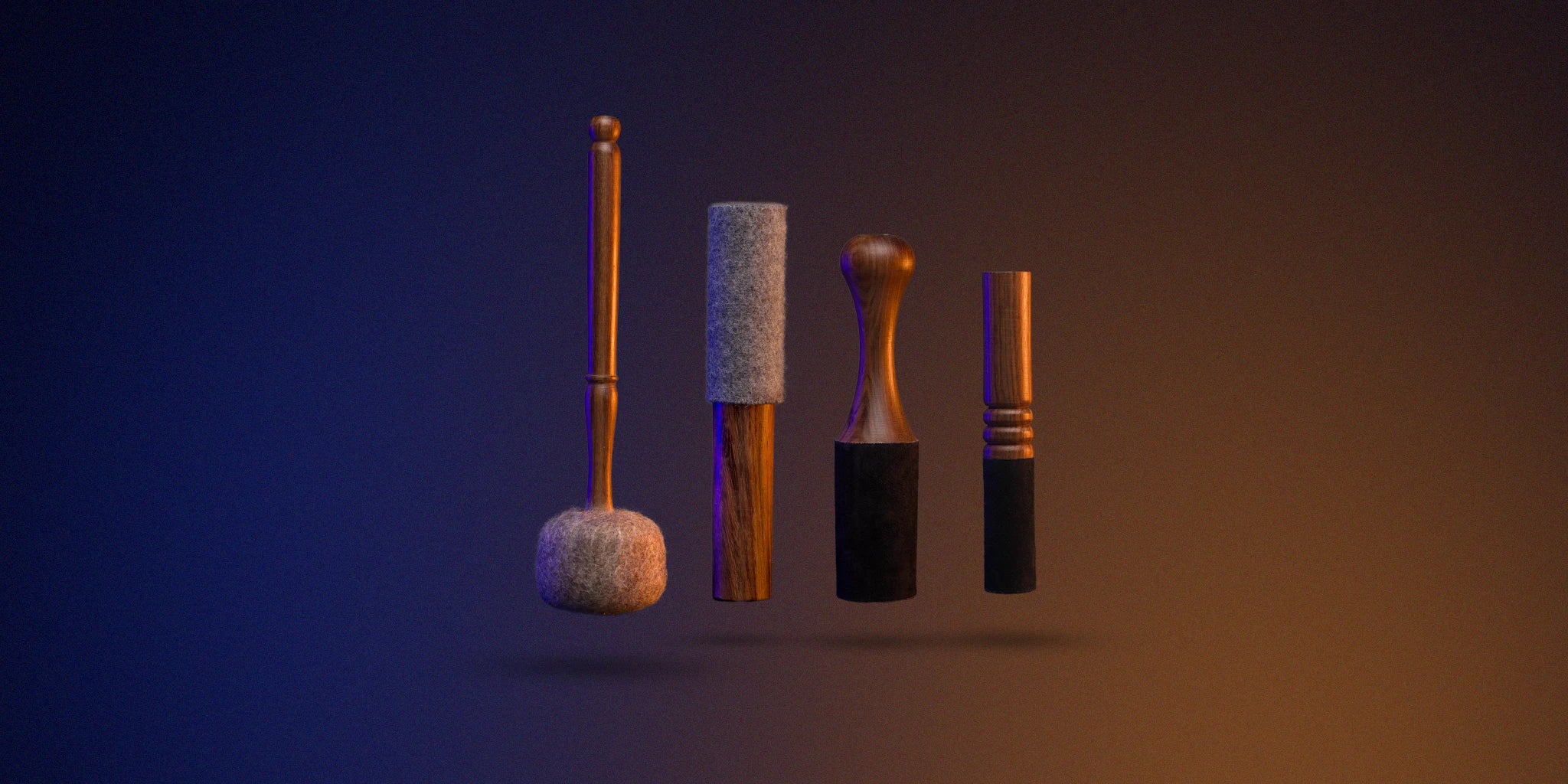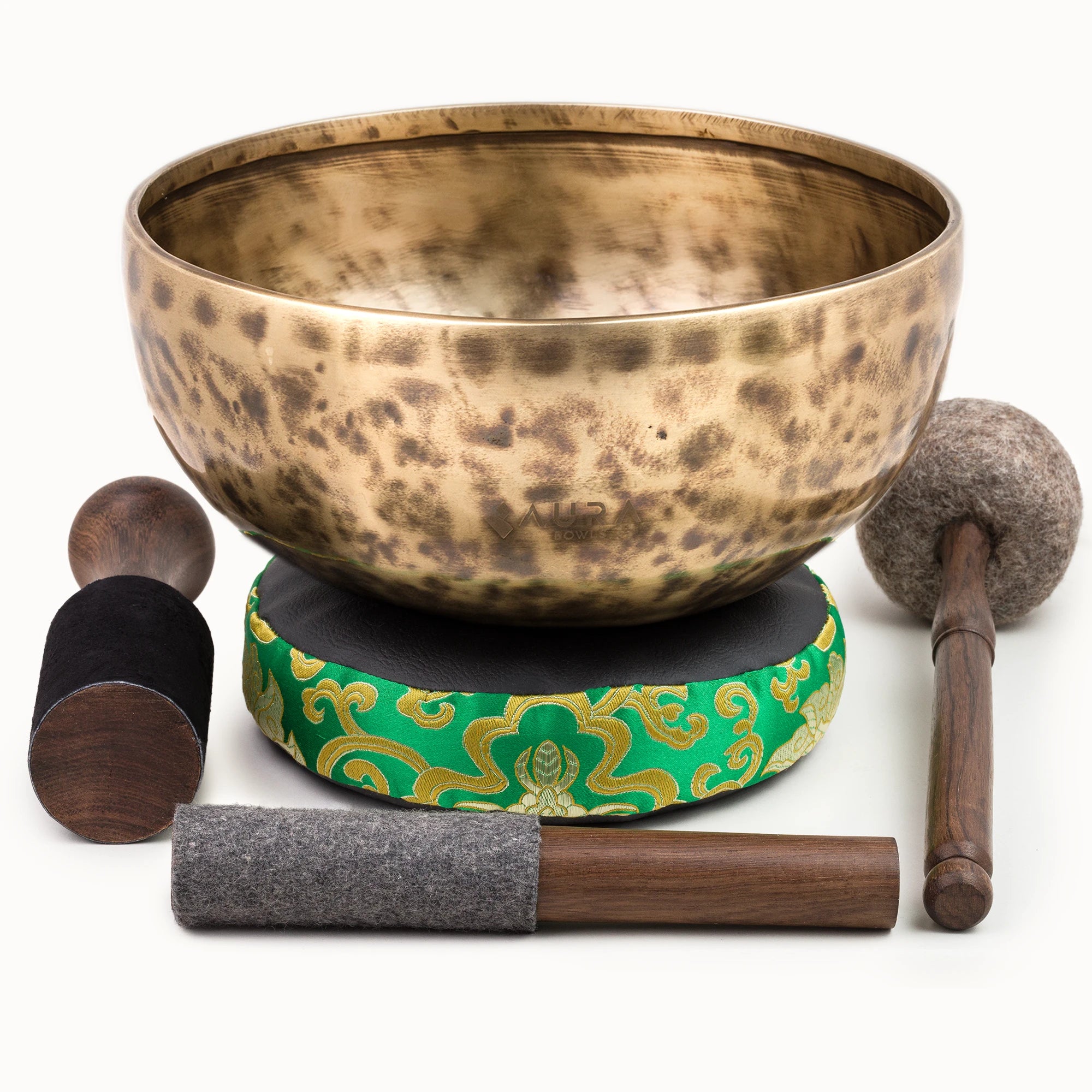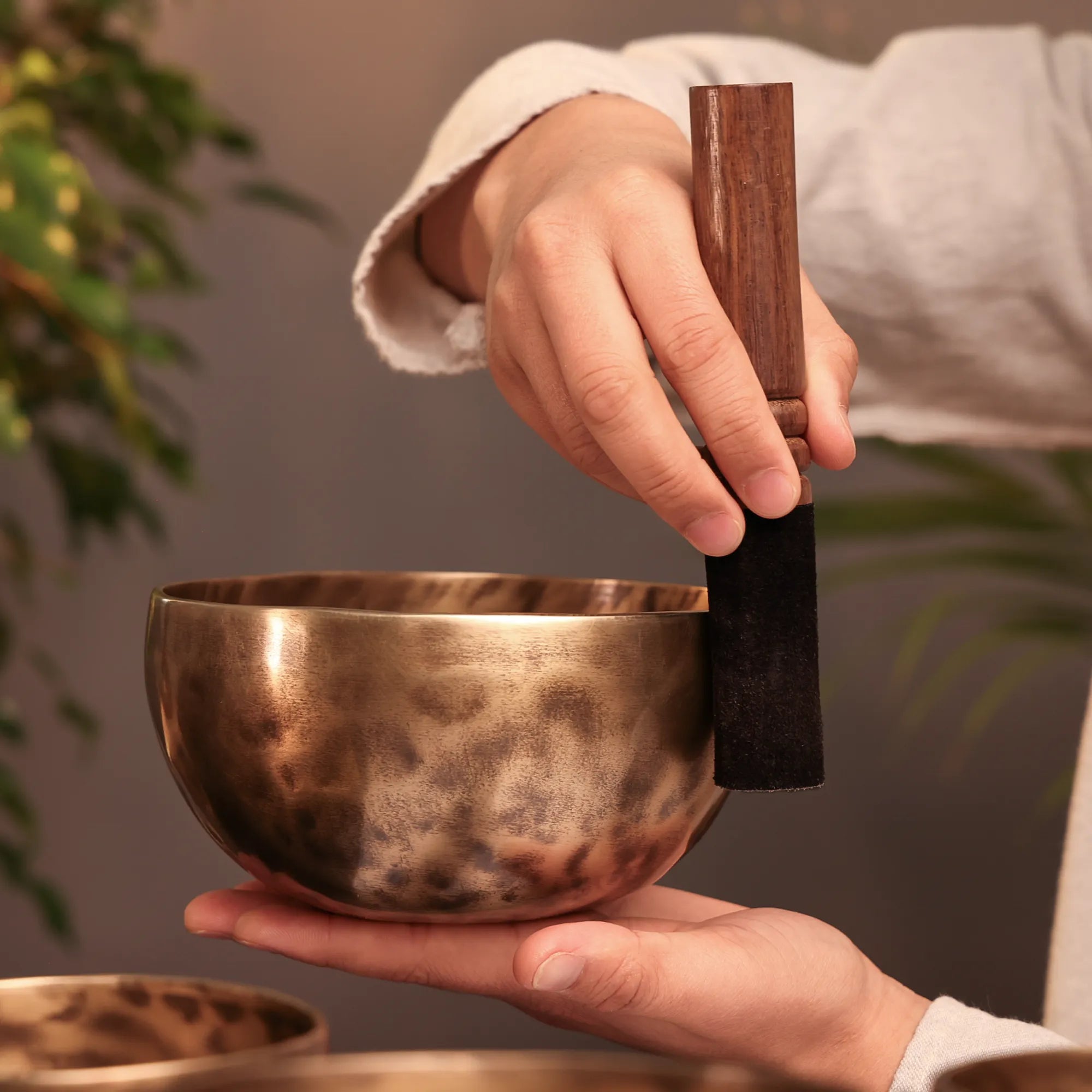Welcome to your beginner’s guide to Tibetan singing bowls! These unique instruments produce rich tones, blending overtones and undertones to create a calming, therapeutic effect. Like any musical instrument, learning to play takes practice, but don’t worry—it’s a simple and rewarding process. With patience and the right technique, you’ll soon be producing beautiful, resonant sounds.
Important Tips for Getting Started
- Avoid holding the bowl above its base line, as this is a common mistake among beginners and can dampen the sound. This simple tip makes a big difference!
- For Learning, start by holding the bowl on your palm rather than on a cushion.
- For larger bowls, rest on your open palm or use a cushion.
- Let your bowl guide you as you discover its unique voice.
Understanding Your Mallets
These handmade Himalayan hardwood mallets features multiple sections, each suited for a specific technique:
- Felt / Woolen section: Use for striking the bowl.
- Wooden section: Ideal for playing around the Rim. You can gently tap the bowl, but avoid hard strikes as it may produce harsh sounds.
- Leather : Can be used for both striking and playing around the Rim.
Basic playing technique
Gong (Striking) Technique
- Use the woolen part for medium and large bowls, and either woolen or leather part for small bowls.
- Hold the wooden part of the mallet and strike the rim with a gentle upward glance, adjusting force for volume.
- Strike different spots on the outside edge, 1-2 inches apart, to create stronger sound waves.
Around the Rim Technique
Wooden part produces more high tones with underlying low tones.
Leather mallet creates deep low tones with hints of higher harmonics
- Hold the mallet like a big pen or pencil.
- Move clockwise around the rim with even pressure
- Use your full arm (not just wrist) - like stirring a big pot of soup - as sound builds!
- A gentle tap can help “warm up” the bowl before playing.
Final Notes
• Start slower than you think—beginners often go too fast.
• Keep the mallet mostly vertical, not exceeding 45 degrees from the rim.
• Apply consistent pressure - the friction creates the vibration. If you hear a rattling sound, just slow down your speed while maintaining the same pressure.
Experiment and explore—each bowl has its own unique personality. Think of it like getting to know a new friend and let it guide you as you practice.
Breaking In Your Mallet :
Allow about five minutes for initial break-in of your mallet. Over time, it will develop beneficial micro-grooves that actually improve your sound production and playability. Think of it as your mallet getting to know your bowl !
Logo list
